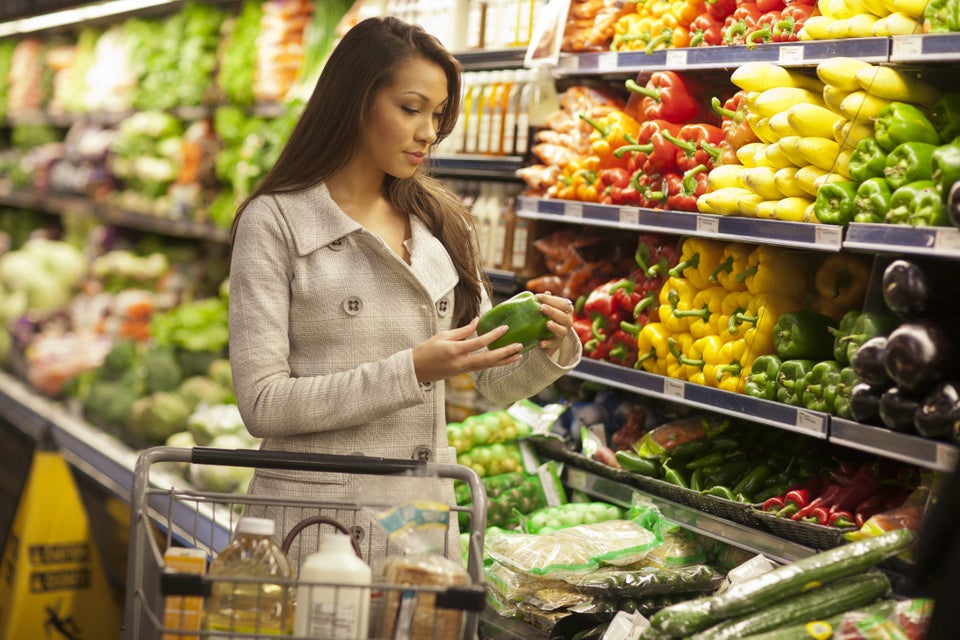The average couple lays out as much as $180 a week; families of four can drop closer to $300. We've found a few surprising ways to lower your spending.
By Lynn Andriani
Leave It To The Pro

Jeff Greenough via Getty Images
The adage that the more you do something, the better you get at it doesn't just apply to mental focus or running a mile. Food shopping, too, is a skill, and when you practice it, you start to learn how much different foods cost and can spot true deals. So, consider divvying up other household duties but designating one person to be the official grocery shopper. That way, she or he will be able to develop the skills needed to be a better shopper (and not just to remember the price of these four items).
Close Your Internet Browser Before You Walk in the Store

AleksandarNakic via Getty Images
We know how smartphones can help you save money, but using your device to search for recipes while you're actually in the aisles might have the opposite effect. More of us are using Pinterest and other recipe sites and apps while we're shopping, finding recipes and buying the necessary ingredients. While this may be convenient, this type of shopping also falls into the "impulse buy" category. You'll probably end up purchasing something you already have at home, or not realizing how much the spices, vegetables and meat you need for that last-minute Mexican dinner will cost until you're at the register. Instead, plan ahead and make a list based on that Pinterest recipe before you go to the store.
Pick A Smaller Cart

Rafael Elias/Moment Open/Getty Images
Just as we pile on an extra-large portion of lasagna when we have a bigger plate and throw even more magazines, snacks and bottles of hand sanitizer into our purse when it's ginormous, we're likely to stack our shopping carts with up to 40 percent more items if they're the size of Mini Coopers. Hand-held baskets may not be the answer, though, since research shows people who use them are more likely to make unplanned purchases (especially of junk food), since the pain of lugging a heavy load can affect judgment. The solution is either to use a smaller cart or a basket that you pull -- or at least to be aware that whatever you're using, it doesn't have to be filled to the brim for you to check out.
Advertisement
Consider Your Stance On Organic

Jupiterimages via Getty Images
The organic-versus-conventional debate is a tough one. Here's a helpful list, though: It's the "Clean 15," and consists of fruits and vegetables that were found to have the least amount of pesticide residues. Avocados are at the top; only 1 percent of samples showed any detectable pesticides. Other green-lit foods include corn, pineapples, cabbage, frozen sweet peas, onions, asparagus, mangoes, papayas, kiwi, eggplant, grapefruit, cantaloupe, cauliflower and sweet potatoes. So if you're all about organic, carry on. But if you're looking to cut costs, you may want to consider exactly what organic items you're spending on.
Eat Healthier Between Meals

New State Of Color via Getty Images
We are really into our midmorning, midafternoon and midnight bites. Sales of snack foods grew to $374 billion last year; and, according to Nielsen data, while overall grocery spending has barely changed, we're spending much more on protein bars, chips and beef jerky. If you regularly graze on what you already have, instead (e.g., fruits, vegetables, peanut butter on toast, a few slices of cheese), you'll save money (and be eating more nutritionally, too).


